The ABC was considered an alternate source of programming, and as such, more stimulating and thought provoking. This did not necessarily mean popular with mainstream audiences. It was argued that the ABC must remain relevant so that the taxpayers received value for money, but does this result in compromises rather than excellence?
It can be asserted that attracting a larger audience is making it more relevant, but if that audience is less distinguishable from the commercial viewing crowd, then there is an increased likelihood that mimicking the commercials will result in a dilution of the so called stimulating and thought provoking alternate fare. The problem is that what stimulates an intellectual can often put to sleep the majority.
There are the occasional shows that can fulfil the viewing needs of both. Programs that are cleverly written that both entertain and invigorate the grey matter. Quality British shows had a history of doing this, which the ABC tried to emulate. The BBC and ABC pioneered the current affairs revolution, which once became popular with the mainstream, was soon adopted by the commercial stations. Satire was another area the British excelled at, that the ABC ventured into, often with very quirky results such as the Aunty Jack Show, Max Gillies and many more. Producing a fresh batch of young stars such as Andrew Denton. The commercials soon leeched talent from the ABC, but did not always foster that talent in the same manner. It was more about profit making than taking risks and squandering resources on experimentation.
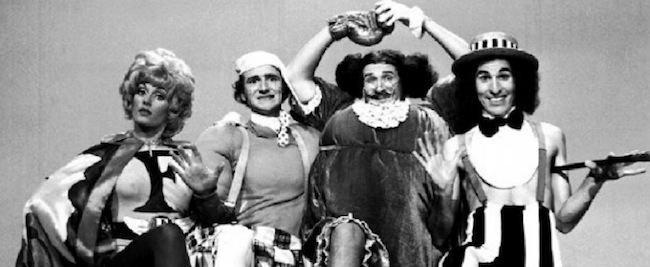
The commercials now lavish larger budgets on shows such as Master Chef. Who would have thought that a cooking program could become a rating juggernaut? The multiple camera use, computer graphics, staging and lighting of modern shows is a world apart from a simple three camera studio or outside broadcast effort of the early black and white era. Kerry Packer started a revolution when he stole the cricket from the ABC and invigorated it with high tech graphics and energetic presentation. In this case, it was Nine who were the trend setters, much to the horror of the then staid cricket establishment. There was a time when the WAFL would not permit live broadcasts of the football, or for that matter even a replay, but how things have changed to where selling television rights is a very significant part of the AFL’s finances.
The ABC was an early television trend setter, lavishing big budgets that used the symphony orchestras to entertain in grand popular music shows presented by Lorrae Desmond (1962 Gold Logie Award for Most Popular Personality on Australian Television for The Lorrae Desmond Show), Jeff Phillips (Sounds Like Us in 1970) and the like, as they offered quality big band variety extravaganzas and pioneered Australian television drama before Crawfords Australia entered this field with a range of police dramas, sitcoms, mini-series, telemovies and children’s drama.
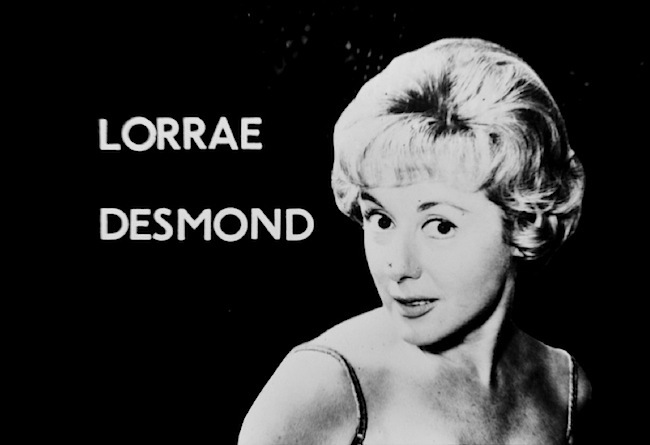
The ABC was also renowned as a training venue for program makers and technicians. Its internal training section tutored people in valued skills, which led to the commercials tempting graduates to leave to service their needs. This was a drain on ABC finances for the benefit of the commercials, which eventually led to the ABC abandoning its large scale in-house training for more specific short courses aimed at management and program makers. The heavy duty training then became the provence of institutions such as Technical and Further Education (TAFE), Universities, and performing arts academies.
This soon extended to program production as former ABC staff-elected director, journalist and broadcaster Quentin Dempster enlightened us in a Sydney Morning Herald article titled: Deliberate dismantling of our diminished ABC continues
He points out historically that…
“When the Hawke and Keating governments slashed ABC funding, the management and board began a regime of co-productions in drama. By the mid-1990s, the ABC no longer produced any drama in-house.”
“The co-production model then moved to other genres, pursued by heavy lobby pressure on government from the commercial television production sector. The in-house natural history unit was soon gone, followed by documentary.”
“The outsourcing of ABC television production to the commercial sector now covers all drama, documentary, natural history, most feature programming and, increasingly, studio-based light entertainment.”
“Many programs, particularly drama, are commissioned with external co-funders on the basis of their commercial ”bankability”, that is, their prospects for profitable on-sale to pay TV and other commercial operators and spinoffs after a showing on the ABC.”
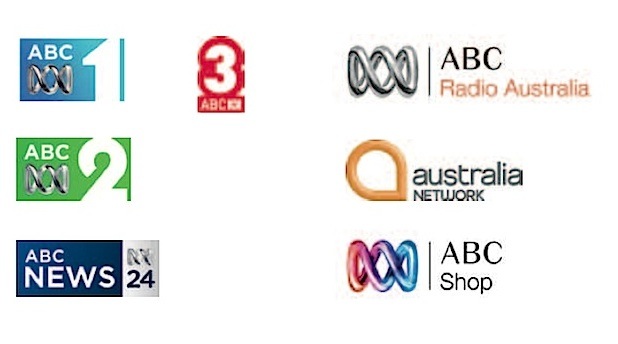
In our article titled: The plight of ABC produced programs and staff we investigated a number of issues facing the ABC and made reference to the Senate inquiry into job and program cuts. The Senate has now tabled the report dated October 2011.

Here is a link to the related PDF file: Senate Report on the Inquiry into recent ABC programming decisions
The Senate report urges the ABC to maintain internal TV production in all the regions or risk weakening its independence. It also recommends the federal government and the ABC develop a way to ensure the ABC is getting value for money when working with independent producers.
Kim Dalton, the ABC’s director of television, argued that it is cheaper to make shows externally than in-house using the ABC’s own resources. But the Community and Public Sector Union disagreed, calling for a full audit to determine the truth. Journalist Quentin Dempster joined others, including the minority Greens, wanting an independent audit of the ABC’s programming finances, so that the real cost of internal vs external production can be established. But the Senate did not adopt this call, nor did they agree to a reversal of the recent redundancy round which saw 100 jobs lost, in particular in Brisbane, Adelaide, Perth and Hobart.
The inquiry also rejected the Union’s call for a fixed commissioning model along the lines of the BBC’s model, which ensures quotas for internal and external production. But the report did come down on the side of ABC staff, urging ABC management and the federal government to halt the loss of programs and staff in the smaller States.
The inquiry received 335 submissions with a further 68 form letters from interested parties, including independent producers, ABC unions and staff. The Senate committee had only two weeks to produce its report after a one-day public hearing was held in Canberra on 26 September.
Recommendation 1
The committee recommends that the ABC ensure that it maintains an effective capacity to internally produce quality programming across the regions in addition to news, sport and current affairs. The committee notes that the increasing use of external producers has the capacity to diminish the ABC’s independence and skill base.
The committee calls on the ABC and the Minister for Broadband, Communications and the Digital Economy to identify and implement processes which ensure value for money, transparency and skill retention. In the context of the need to maintain the ABC’s skills base, the committee calls on ABC management to immediately reassess the implications of any employment decision on its capacity to deliver quality programming across the network.
Recommendation 2
The committee recommends that ABC management sets out in detail where it sees its future as a broadcaster and a content producer, and particularly with reference to the ABC Charter responsibilities of balancing programs of wide appeal and specialist interest as well as how ABC programming reflects the cultural and regional diversity of the Australian community.
Recommendation 3
The committee recommends that ABC management release a draft television production strategy for staff, community and private sector consultation, prior to its finalisation.
Recommendation 4
The committee recommends that the ABC consult with stakeholders prior to making significant changes to either internal creative and production structures or state-based activities.
Recommendation 5
The committee draws the attention of ABC management to the ABC Charter obligations to ‘encourage and promote arts, including musical, dramatic and other performing arts’ and calls on ABC management to urgently publish a strategy outlining how it can meet this obligation given the planned disbanding of the ABC arts unit.
Recommendation 6
The committee recommends that wherever appropriate the ABC include free archival use clauses in all future co-production contracts.
Recommendation 7
The committee recommends that the ABC publish annual targets of regional content on ABC television against which it reports in order to meet its Charter obligation to ‘reflect the cultural diversity of the Australian community’ and to promote ongoing internal program production in the Brisbane, Adelaide, Perth and Hobart (BAPH) states and regional Australia.
Recommendation 8
The committee recommends that the ABC actively manage its production facility infrastructure, particularly in the Brisbane, Adelaide, Perth and Hobart (BAPH) states, so that it is utilised as effectively as possible.
Recommendation 9
The committee recommends that the government take into account the findings of the Convergence Review about the structure of the media market and investment in Australian content by all broadcasters when considering the ABC’s funding needs in the forthcoming triennial funding round.
Recommendation 10
The committee recommends that as part of the triennial funding round, the government consider the ABC’s capacity to maintain a critical mass of staff, skills, infrastructure and production in regional areas.
Meanwhile, the ABC Annual Report 2010/11, has been tabled in parliament and is now available on-line and in printed form.
Here is a link to the related PDF file: ABC Annual Report 2010/11
The following contains some extracts, notes and comments related to the Annual Report.
The report reveals that the ABC’s redundancy costs more than doubled, rising to $7.311 million last year. In 2010 the ABC’s redundancy bill was just $3.161 million. Meanwhile, wages and salaries increased to $325.900 million in 2010/11, an increase from $304.451 million the year before.
The increased redundancy bill is a result of the TV production review which led to many ABC staff taking voluntary redundancy.
Management salaries increased too, with ABC managing director Mark Scott earning $758,059 last financial year, an increase of $111,809 on 2010.
In total, six ABC executive officers will receive around $2.8 million this year.
Last year, the six were paid approximately $2.5 million.
During the year, the Corporation had 145 (132 in 2010) other employees who received gross payments in excess of $150,000.
The ABC paid bonuses to 161 executives totalling $749,666 an average of $4,656 per executive. It paid bonuses to 121 non-executive employees totalling $298,387 an average of $2,466 per employee.
Also during 2010/11, the ABC spent $1,945,845 on consultancies.
The ABC Annual Report 2010/11 revealed that the ABC’s redundancy bill had more than doubled last year, therefore expecting less staff to be on the payroll this year. Yet at the same time more staff were being employed as others were being shed. Last year, the ABC full-time employees increased from 4,557 to 4,599.
Full-time employees
“Full-time equivalent” positions account for all employees, including those who work part-time or have other flexible working arrangements.
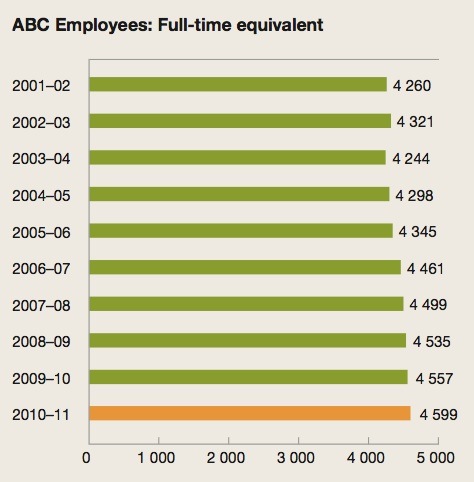
Distribution of employees
The ABC employs staff across five broad categories, each of which performs an important function in the Professional ABC’s operations.
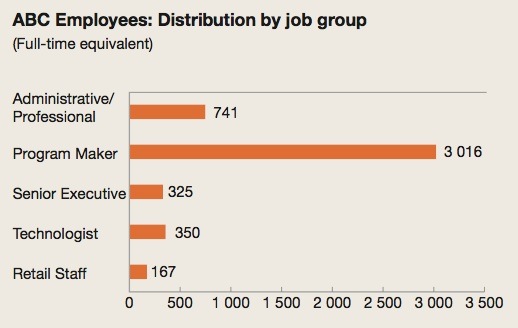
Interestingly, there’s almost as many chiefs (325) as indians (350) when it comes to keeping the technological wheels greased and in motion, and twice as many administrative staff (741).
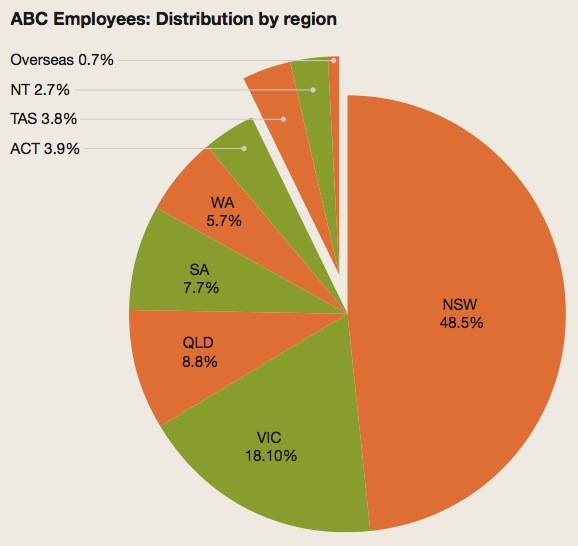
New South Wales and ACT employs more than half of the total staff, with Victoria and Queensland employing another quarter.
South Australia, Western Australia, Tasmania and the Northern Territory only employ 19.9% of the total staff between them.
Sydney thus seems to be the epicentre of most activity, which corresponds to the distribution of population throughout Australia.
Australian Population Distribution

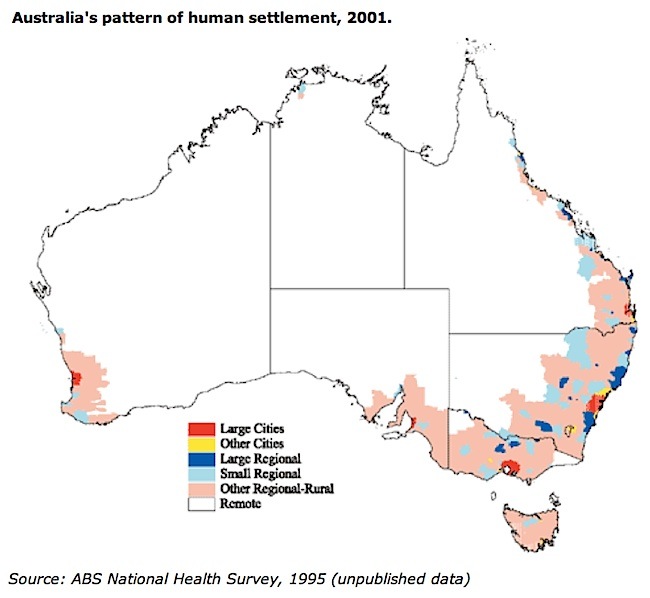
Western Australia has only 5.7% of the ABC workforce and negligible TV production, yet Perth and Adelaide audiences support ABC1 more than any other state, according to the below OzTAM survey in mid 2011.
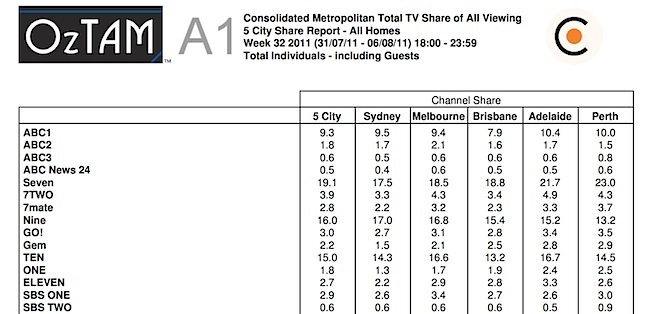
As at 30 June 2011, the Corporation had contributed $509,600 ( $611,200 in 2010) towards the operational costs of Freeview, which comprises all the channels from Australia’s free-to-view broadcasters, including the ABC, SBS, Seven Network, Nine Network, Network Ten, PRIME7, WIN Television and Southern Cross Television.

Our story Can Free-to-air stations stay relevant as technology and audience needs change? deals with the changes in free-to-air television, as opposed to Pay TV. Freeview is intended to bring all of the free-to-air (FTA) broadcasters on to a consistent marketing platform to compete against subscription television, in particular Foxtel.
Ongoing Media Challenges explains the impact of digital television in an environment of ongoing change in the industry.
In our story What is the future of Australian Television? we take a look in the crystal ball to see where the television industry is heading.
The Corporation paid user fees to MediaHub in 2011 totalling $4,312,188 ($807,515 in 2010). The Corporation also contributed a further $2,687,893 ($16,593,538 in 2010) in capital contributions. In return, The Corporation received $278,306 ($107,568 in 2010) in service fees from MediaHub as payment for ABC employees who have been seconded to MediaHub.
MediaHub is a joint venture between the Australian Broadcasting Corporation and the WIN Corporation which is designed to further centralise operations for both organisations with the intent of cutting costs.
MediaHub Australia is a multi-million dollar state-of-the-art facility in Ingleburn in Sydney’s South West. It is now the central location for broadcasting both WIN and ABC television content throughout Australia.
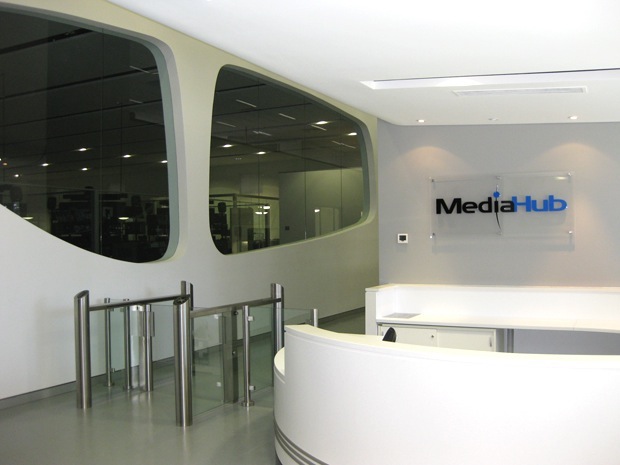
MediaHub was covered in some detail in our story titled: The Evolution of Television News and Presentation
The ABC’s MediaWatch on 1 November 2010, had a shot at MediaHub’s teething problems as told here: MediaHubble toil and trouble
More than half of ABC1’s top 20 programs in 2010/11 were Australian productions.
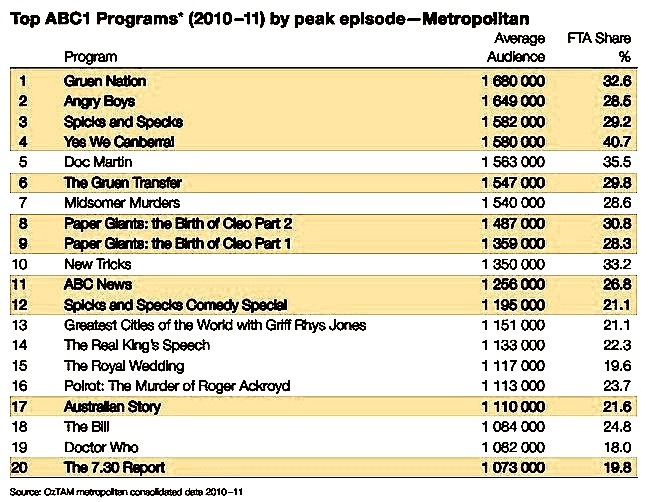
Gruen Nation was ABC1’s highest rating program in 2010/11, with a five-city metropolitan series average of 1.6 million viewers. Gruen Nation was repeated on ABC2, achieving a five-city average of 221,000 viewers. The series recorded 106,000 plays via ABC iview.
Online audience
ABC Online reached an average 3.5 million users each month in 2010/11 (up 7% on 2009/10).
ABC Online provides audiences with a range of ABC content and services, including program sites, the catch-up television service iview, live radio streaming, podcasts, news, opinion and analysis, blogs, ABC Kids, ABC Shop Online as well as links to the ABC’s presence on social media platforms.
The ABC TV specific online traffic reached an average of 1.2 million users each month in 2010/11, up from 1.1 million in 2009/10. Interestingly, there is a high interest from overseas users, as there was an average of 14 million domestic and international visitors each month to ABC Online, an increase of 40% from 2009/10.
Please note that “Reach” measures the total number of people who have visited a website over a month, whilst “Visitors” measures the number of unique browsers (not individual people) which have accessed ABC websites, not to be mistaken for “Visits” which measure the number of sessions on those sites. For example, each month, ABC news and current affairs websites reached an average 1.84 million users and averaged 7.9 million visitors and 19.4 million visits. ABC Online websites overall reached an average 3.5 million users and averaged 34 million visits. Its very easy to be confused by the jargon, so reader please beware.
Regardless of the statistics, the ABC website is attracting a significant and growing audience which is complementing their broadcasting activities, by encouraging greater audience participation. This appeals to younger audiences and is thus capable is creating a culture where up and coming generations will consider the ABC is ‘cool’ and progressive rather than the old ‘Aunty’ notion. Particularly if this is reinforced by the type of programs being broadcast. Because the ABC has so many outlets, it can now cater for all manner of tastes. The intellectuals can listen to Radio National, the music connoisseurs to Classic FM, youth to Triple J, and so forth from radio through to television.
Not only is the Internet providing program information and participation, but it is also enabling people though iview to catch up on programs they have missed.
ABC iview
In 2010/11, ABC’s internet television service iview recorded 740,000 monthly visitors in 2010/11, an increase of 84% from 403,000 in 2009/10.
ABC iview has moved beyond the personal computer, and is now available on leading internet connected television, set-top boxes and the Apple iPad, giving audiences more choice than ever in when, where and how they consume ABC television content.
Social media
Social media is now a key part of the ABC’s strategy for promoting new television programs as well as allowing audiences to participate online, allowing the ABC to develop active communities and engage in new conversations with audiences.
Programs such as Q&A, Spicks and Specks and Angry Boys saw audiences sign up in record numbers to join the conversation on social media platforms such as Facebook and Twitter.
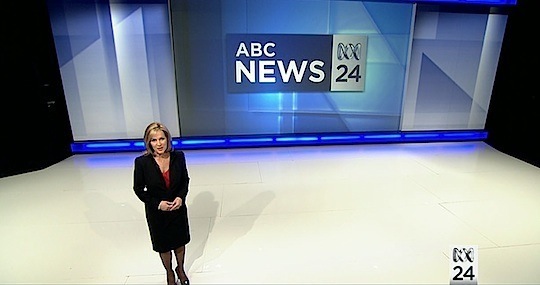
On 22 July 2010, the ABC launched the free-to-air ABC News 24, with contributions from ABC correspondents based in 13 international bureaux. The ABC claim it is the most watched news channel in Australia. Though Sky News Australia, the Pay TV 24 hour cable and satellite news channel also claims to be Australia’s leader in 24-hour news, being available in 2.5 million homes on Foxtel, Austar, Optus Television and Neighbourhood Cable subscription platforms.
Sky News Channel’s parent company Australian News Channel Pty Ltd is owned by British Sky Broadcasting, Seven Media Group and Nine Entertainment Co., each with a 33% stake in the company respectively.
Meanwhile, Seven News claim to be the most-watched news program as the number one rating news-service around the nation in every capital city in Australia.
Though when one considers in-depth coverage, a half hour commercial news bulletin is rather short when advertisements, promotions, sport and weather are subtracted.
The ABC’s MediaWatch on 3 October 2011, had a shot at ABC News 24, or as they termed it ABC Snooze24.
It seems they were running the BBC’s coverage of the speech to the UN General Assembly by Palestinian President Mahmoud Abbas, who was there with the Palestinian delegation to make waves and push for a vote on statehood. In the midst of his address, the ABC chopped in to play numerous promos and then go to The World This Week, with Tony Eastley, where the first story mentioned that this event was to happen. So rather than hear news happening live, we were given old news pointing to the event.
Just to make matters worse, Sky News covered the event live.
A not uncommon thing on ABC News 24 as witnessed when Prime Minister Kevin Rudd was deposed or the Christchurch earthquake.
An ABC transcript and video of this story can be found at: ABC Snooze24
Intrigued by the finances relating to ABC News 24, freelance journalist Margaret Simons, an author and convenor of journalism at Swinburne University of Technology lodged a freedom of information request to determine how much the service costs. Her reports can be found at the community funded blog site YouCommNews titled: The Final Outcome- ABCNews24
Margaret’s story has also been accepted for publication by Crikey.com.au
The ABC always seems to have been a political hot potato, being funded by the public purse but then being pressurised through budget cuts to be more palatable to the political party in power. They are in a no-win-situation where each party thinks they are biased against them, particularly when the ABC asks the embarrassing questions that need to be answered.
The ABC sometimes shoots itself in the foot, like the time the second radio network (now Radio National) caused a furore in federal parliament when they made a big feature out of pedophilia some three decades ago, by interviewing such sexual deviates and making their habits a focus of the evening. That set the big guns blazing, putting the ABC under the microscope ever since, and severe retribution in the form of budget cuts. Not that this stops the rebels, as occurred as a result of an ABC innovation to retrain typists and make them Broadcast Officers (production assistants, producers and presenters) once email and terminal based word-processing replaced the typed memo.
The initiative involved creating the Australian Women’s Broadcasting Co-operative where the female staff were not only given tutoring in program making skills but a show on Radio National to practice these skills. What started out with the best of intentions was soon taken over by the feminist element. It was a time of great protest following Germaine Greers publication of the Female Eunuch in 1970, which then spawned the feminist movement. From 1975 and for twenty years, the Co-operative had a big impact for women within the ABC. This eventually led to a greater awareness and equal opportunity.
The opportunities offered by the Co-operative not only led to liberation in the workforce, but was a regular theme of the workshop’s weekly radio program The Coming Out Show, which become more adventurous by the week. Sex discrimination issues and equal opportunity were championed by this group, prompting internal reforms within the ABC, which helped change the voices of ABC Radio and opened doors for many women broadcasters and journalists. But a fair go for women in the workforce was not their only agenda, for soon the discussion moved onto sexual matters, dealing with all manner of female issues from contraceptive to abortion. Much of this was very enlightening, though some arguments were highly controversial for the time. When most of these issues were exhausted, they then ventured onto the sex act and dwelt with various techniques, sexual persuasions and toys. Much of this was very titillating at first, but then seemed to deteriorate as the rebel element started pushing the boundaries more and more. It was remarkable that the language and content did not result in a further furore in federal parliament if anyone bothered to listen. The saviour was probably the fact that the show did not register on Radio National’s ratings, and maybe non-followers just turned off rather than complain?
Now days explicit language and the discussion of alternate lifestyles is less likely to shock… but the ABC has surely pushed the envelope over the decades in more ways than one.
The current issue within the ABC is now the threat to internal television production.
So if all production is outsources one day, there will no longer be any scope for the rebels and any program experimentation for that matter?







